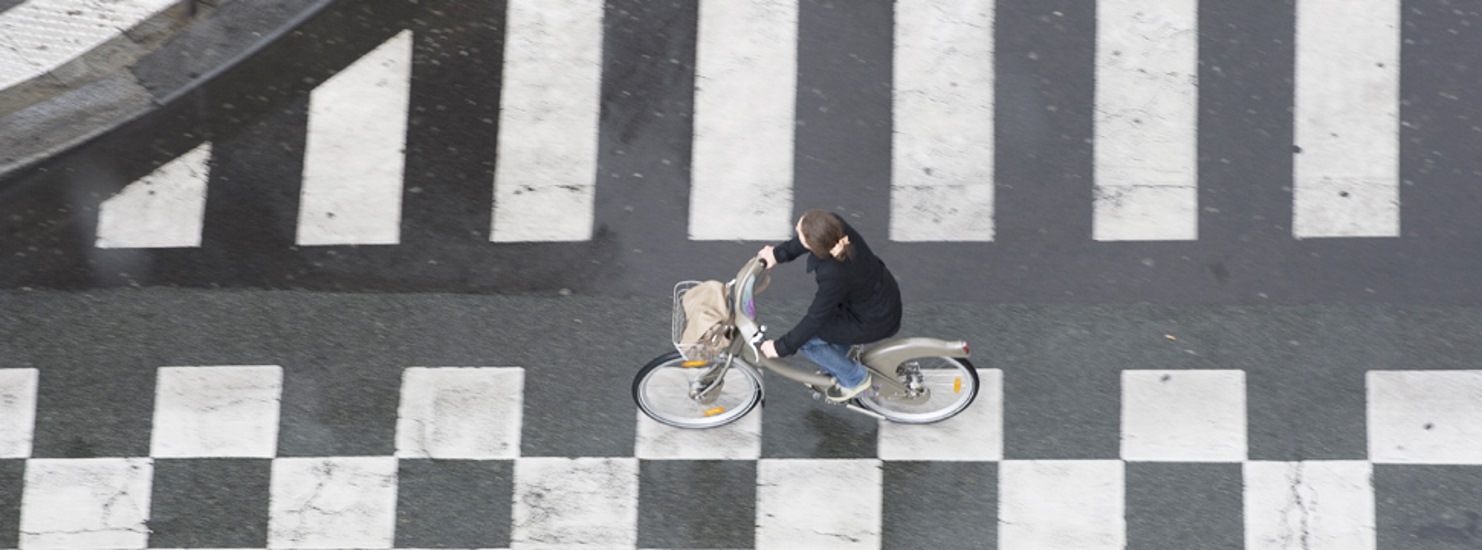
Paris: Inaugurated the first stretch of REVe, the future Express Bike Network
Opening last May, the 600 m segment alongside the Bassin de l’Arsenal kicks off the realization of the new cycling highways network, as a part of the far-reaching Plan Velo 2015-2020
A proud Paris Mayor Anne Hidalgo announced on Twitter, May 18th, the completion of the first 600 m-long, two-lanes, two-meter wide track near Bastille that can be regarded as the launch of the new ambitious network of cycling highways intended to take the French capital in line to the cycling standards of the most cycling-friendly cities in Europe.
The 150-mln EUR plan adopted last year by the Municipality of Paris is a comprehensive program that, according to the words of the deputy mayor in charge of transport Christophe Najdovski, would make Paris one of the world’s capitals for the bikes. It represents the final outcome of a productive dialogue between the municipalities and the cycle associations of the city, but also of the 7,000 contributions on the subject provided on the internet by Paris’s inhabitants in the spring of 2015.
The project sets as its ultimate goal a significant increase of the modal share of cycling in the capital from the current 5% to 15% by 2020. Not exclusively focused on the construction of brand new infrastructure, the plan aims to become a manifesto for a gradual but decisive commitment to make Paris a more bike-friendly city through an unprecedented investment, as part of the mayor’s multi-year strategy to make the city greener, by reducing car traffic and lowering the levels of air pollution.
The realization of a structural network of cycling highways will provide about 45 km of new cycling paths large, secure, separated from the traffic and wide enough (2 m per direction) to allow bikes to overtake one another. It will be articulated along two main axes, the North-South and the East-West, and along the banks of the Seine. Alongside the main network, the improvement and the completion of the existing cycling paths over the whole city area and the extension of the 30 km/zones will bring to doubling the total length of the network from 700 to 1400 km.
Further measures are meant to guarantee more safety and comfort to cyclists and to facilitate the combination with other modes of transport and they include: the creation of 10,000 new bike parking racks and of 7,000 more advanced stop lines at red lights; the application to all the intersections with traffic lights of the current wide-spread practice which allows cyclists in 30 km/h zones to turn right or go straight at traffic lights, along with the possibility of left turns as well; and a new system of secure parking deposits in all train stations, tram terminuses and metro connections.
Here is an overview of the new rules and signs introduced by Plan Velo.
A clear focus of the plan is on the optimization of the city’s bike-sharing system Velib’, the service launched in 2007 which has seen in the last years a relevant increase in usage and constant spread and improvement of bikes and facilities and reached the impressive number of 225,000 registered users in 2014. By 2017, the introduction of e-bikes in the bike-sharing system will further enhance the service and it will allow a stronger connection with public transportation. The program calls for a share of 35% of the total trips by bike using Velib’ by 2020.
The far-reaching strategy of the city administration aims ultimately to develop cycling culture as a whole, through initiatives such as: organization of events for awareness-raising on sustainable mobility; support to bike schools and to collective bike repair workshops; subsidies for citizens who want to purchase e-bikes and cargo-bikes; creation of new cycle-tourism itineraries within the city; and the introduction of a registration number for every bike to be integrated into a national database, allowing traceability and facilitating the restitution of the bike in case of theft.
In a city where the barrier to cycling widely identified by the citizens as the most limiting is the unsafety perceived in competing with motorized vehicles on the road, the purpose of this plan is to encourage more and more people to travel across the city by bike, by reshuffling the transport priorities of the city from cars to bikes and pedestrians.
It is too early to positively evaluate a project that has still to be fully implemented (the realization of the infrastructure will run at a faster pace from 2017). However, the bottom-up approach undertaken by the administration, with online consultations with regular citizens and visitors, the significant sum invested in the plan, and the challenging goals set in the agenda – particularly, the leap in the projected cycling modal share from 5% to 15% in 5 years – sends a signal of real commitment in regards to progress in cycling conditions in Paris.
And, if it is true that figures shows how capital cities in Europe bring a “trickle-down” effect in their respective countries in regard to positive cycling practices, this represents a good signal for the rest of France, as well as an inspiring exhibit to repeat in other European major cities that still do not have cycling strategies in place.
See also the Plan Velo 2015-2020 Press Kit [FR]
Contact the author
Recent news!
Upcoming events
Contact Us
Avenue des Arts, 7-8
Postal address: Rue de la Charité, 22
1210 Brussels, Belgium









